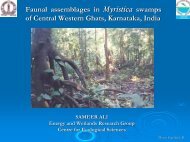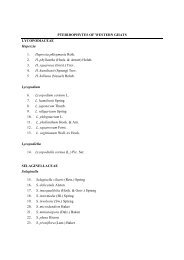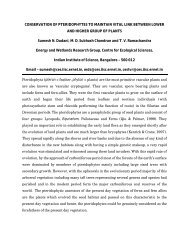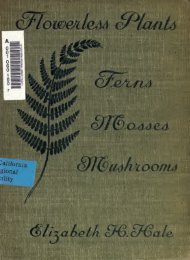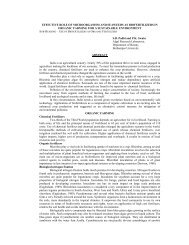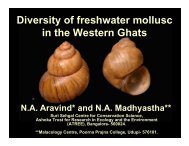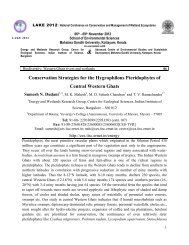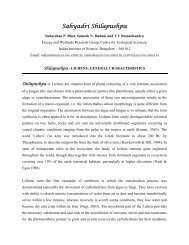regional wood energy development programme in asia ... - CES (IISc)
regional wood energy development programme in asia ... - CES (IISc)
regional wood energy development programme in asia ... - CES (IISc)
You also want an ePaper? Increase the reach of your titles
YUMPU automatically turns print PDFs into web optimized ePapers that Google loves.
Table 5.1 Ma<strong>in</strong> <strong>wood</strong>fuel supply and distribution channels<br />
Supply centre Py<strong>in</strong>yaung Yebokson Y<strong>in</strong>mab<strong>in</strong> Kywetatson Hla<strong>in</strong>gdet Thahtaygon<br />
Market centre Type Dist. Type Dist. Type Dist. Type Dist. Type Dist. Type Dist.<br />
Kywetatson W 10 W 10 W 6 - - - -<br />
Thazi W 30 WB 25 WBMC 21 C 15 B 7 B 14<br />
Meiktila - WB 39 WBMCS 35 C 29 B 21 B 28<br />
Pyawbwe - WB 28 WBMC 24 C 18 B 22 B 17<br />
Wundw<strong>in</strong> - WB 59 WBC 55 - B 41 B 48<br />
Mahla<strong>in</strong>g - WB 63 WB 59 - B 45 B 52<br />
Taungtha - WB 82 WB 78 - - -<br />
My<strong>in</strong>gan W 102 WB 97 B 93 - - -<br />
Kyaukpadaung - B 99 B 95 - - -<br />
Yenanyaung - - B 133 - - -<br />
Note: Type denotes the type of <strong>wood</strong>fuel supplied. W = Fuel<strong>wood</strong>, B = Bamboo fuel, M = Mill offcuts,<br />
C = Charcoal and S = Sawdust.<br />
Distances given are <strong>in</strong> miles<br />
The prices of different types of <strong>wood</strong>fuel, vary very little among the different supply centres,<br />
basically because they are compet<strong>in</strong>g with each other. However, the prices of <strong>wood</strong>fuel at these<br />
centres have been <strong>in</strong>creas<strong>in</strong>g largely due to its scarcity <strong>in</strong> which, it has <strong>in</strong>creased the collection<br />
distance from the villages and the access from the roadside. They have also resulted <strong>in</strong> a natural<br />
<strong>in</strong>crease <strong>in</strong> the labor cost. Woodfuel prices, valid for 1991, at the different supply centres are<br />
shown <strong>in</strong> table 5.2.<br />
From table 5.2, the price of fuel<strong>wood</strong> varies from 104-185 kyats/stacked ton. (This stacked<br />
ton or hoppus ton is actually equivalent to 50 cubic feet <strong>in</strong> volume and not equivalent to a metric<br />
ton of 1,000 kg.). The price difference is due to the quality classification adopted both by traders<br />
and consumers. The lower price is valid for <strong>in</strong>ferior species which are normally used for brick<br />
mak<strong>in</strong>g, for example for fuel<strong>wood</strong> at 104 kyats/stacked ton. The higher side price of 185<br />
kyats/stacked ton is valid for fuel<strong>wood</strong> used by the domestic sector which requires quality species,<br />
split and dried <strong>wood</strong>. The price of fuel<strong>wood</strong> bundles also varies due to the differences <strong>in</strong> quality and<br />
size of the bundles, although a bundle size is normally about 1.5 feet <strong>in</strong> circumference and 1.5 feet<br />
long.<br />
In contrast, the price of bamboo fuel appears to be uniform because of its uniform quality<br />
as previously discussed. A small price variation is basically caused by the difference <strong>in</strong> transport<br />
distance covered by the gatherers from the bamboo source to the roadside collection po<strong>in</strong>t.<br />
Bamboo fuel is normally sold <strong>in</strong> bundles measur<strong>in</strong>g about 5-6 <strong>in</strong>ches <strong>in</strong> diameter and 1 foot long.<br />
20



